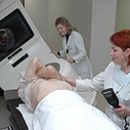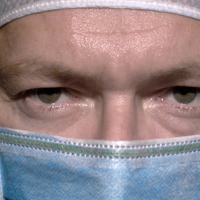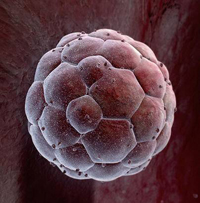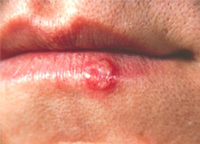What is Sarcoma Jinga? What factors affect the development of sarcoma? How the sarcoma of the Jinga is manifested? What methods of surveys are used in this disease? Read in this article.
Content
Sarcoma Jinga
Sarkoma Yinga ranks second in frequency among malignant bone tumors in children (after osteogenic sarcoma) was first described D. Yinggom in 1921 and was named by the name of the author.
 This tumor is rarely found in children under 5 years and in adults older than 30 years. Most often, this tumor occurs in adolescents aged 10 to 15 years. There are cases of extra-emergency sarcoma of the Yinga with the defeat of soft tissues.
This tumor is rarely found in children under 5 years and in adults older than 30 years. Most often, this tumor occurs in adolescents aged 10 to 15 years. There are cases of extra-emergency sarcoma of the Yinga with the defeat of soft tissues.
Another childhood tumor - a primitive neuroectodermal tumor (drunk) has many common features with bone and extra-e-sarcoma of the Jinga, which can primarily affect both bones and soft fabrics.
All these tumors develop from the same type of cells. The bone sarcoma of Yinga is 87%, extra-like Sarcoma of Yinga - 8% and drove -5%. Typically, such tumors are developing in the central part of the long tubular bones of the upper and lower extremities, but may also be detected in the pelvic bones and in the bones and soft tissues that form the chest.
The frequency of the sarcoma of the Jinga
Among the malignant tumors in children, the Sarcoma of Yinga is 1.8% and is the second frequency among malignant bone tumors in children (10-15%). Every year in the US, this tumor is detected in 150 children and adolescents. Male facial persons are more often susceptible. There is some connection between the emergence of the sarcoma of the Jinga and the presence of anomalies of the bones of the skeleton and the urogenital system. In 30% of cases at the time of diagnosis there is already a metastatic lesion of the lungs and bones.
Risk factors for the development of Sarcoma of the Surge
Currently, several risk factors related to the occurrence of Sarcoma of the Sarka.
Floor. Sarcoma Jinga is somewhat more often found among boys compared to girls.
Age. In 64% of cases of Sarcoma, Jinga meets between the ages of 10 and 20.
Race. The most often Sarcoma of Yinga is observed in the White population.
Prevention of Sarcoma of Jinga, like most other childhood tumors, is currently impossible, since the lifestyle of children and their parents does not affect the incidence of this tumor.
Manifestations of Sarcoma Jinga
Signs and symptoms of the sarcoma of the Jinga
The most frequent symptom of the Sarcoma of the Jinga is pain that occurs in 85% of children with bone lesions. Pain can be caused by both the distribution of the process on the periosteum and the fracture of the affected bone.
In 60% of patients with bone sarcoma of Jinga and almost all patients with an extracepant tumor appears swelling or sealing. In 30% of cases, the tumor is soft and warm to the touch. Patients have elevated body temperature.
These features and symptoms may also be observed with bone injuries and inflammation, however, they pass after treatment with antibiotics.
With a common (metastatic) sarcoma of the Surge of the Surge of the Sicks, may complain about increased fatigue and weight loss. In rare cases, for example, a sharp weakness in the lower limbs and even paralysis is possible when damaged by the spine.
Survey methods for the sarcoma of the UNInta
 Analysis of peripheral blood. The identification of tumor cells in the patient's blood indicates the damage to the bone marrow in the sarcoma of the UNInta.
Analysis of peripheral blood. The identification of tumor cells in the patient's blood indicates the damage to the bone marrow in the sarcoma of the UNInta.
Blood chemistry. Improving the level of LDH (lactate dehydrogenase) gives the right to suspect the metastatic process in a sarcoma sarcoma.
Radiographic study of bones Allows you to diagnose the sarcoma of Yinga with a certain confidence. Radiographic examination of the chest makes it possible to detect the metastases of the Sarcoma of the Jinga in the lungs.
Computed tomography (CT) (Sometimes with additional contrast) bones of the chest and abdominal cavity allows you to clarify the localization and size of the tumor, to identify the presence of metastases in the lungs, lymph nodes and liver.
Magnetic resonance Tomography (MRI) gives additional information about the state of the bone marrow, muscles and connective tissue around the affected bones and helps determine the degree of tumor propagation.
Radionuclide scanning (scintigraphy) Using technetium-99, identifies the defeat of other bones and soft tissues.
Bone marrow and biopsy necessary to identify his lesion at the sarcoma of the Jinga.
Biopsy tumor (Taking a piece of tumor for the study) is the final and mandatory method for clarifying the diagnosis of Sarcoma of the Jinga
Determination of the stage (prevalence) of the sarcoma of the Jinga
The clarification of the stage of Sarcoma of the Jinga is important both to determine the forecast (outcome) of the disease and for treatment planning. In the sarcoma of the Jinga, two stages of the disease are distinguished - localized and metastatic. At a localized stage, a tumor is limited to a cloth from which it originated, but can also spread to the surrounding muscles and tendons. The absence of visible metastases does not exclude the presence of small foci (micrometas) of the tumor, which can be detected only during microscopic examination. Metastatic stage means the spread of a tumor in light, bones, bone marrow, lymph nodes, liver.









